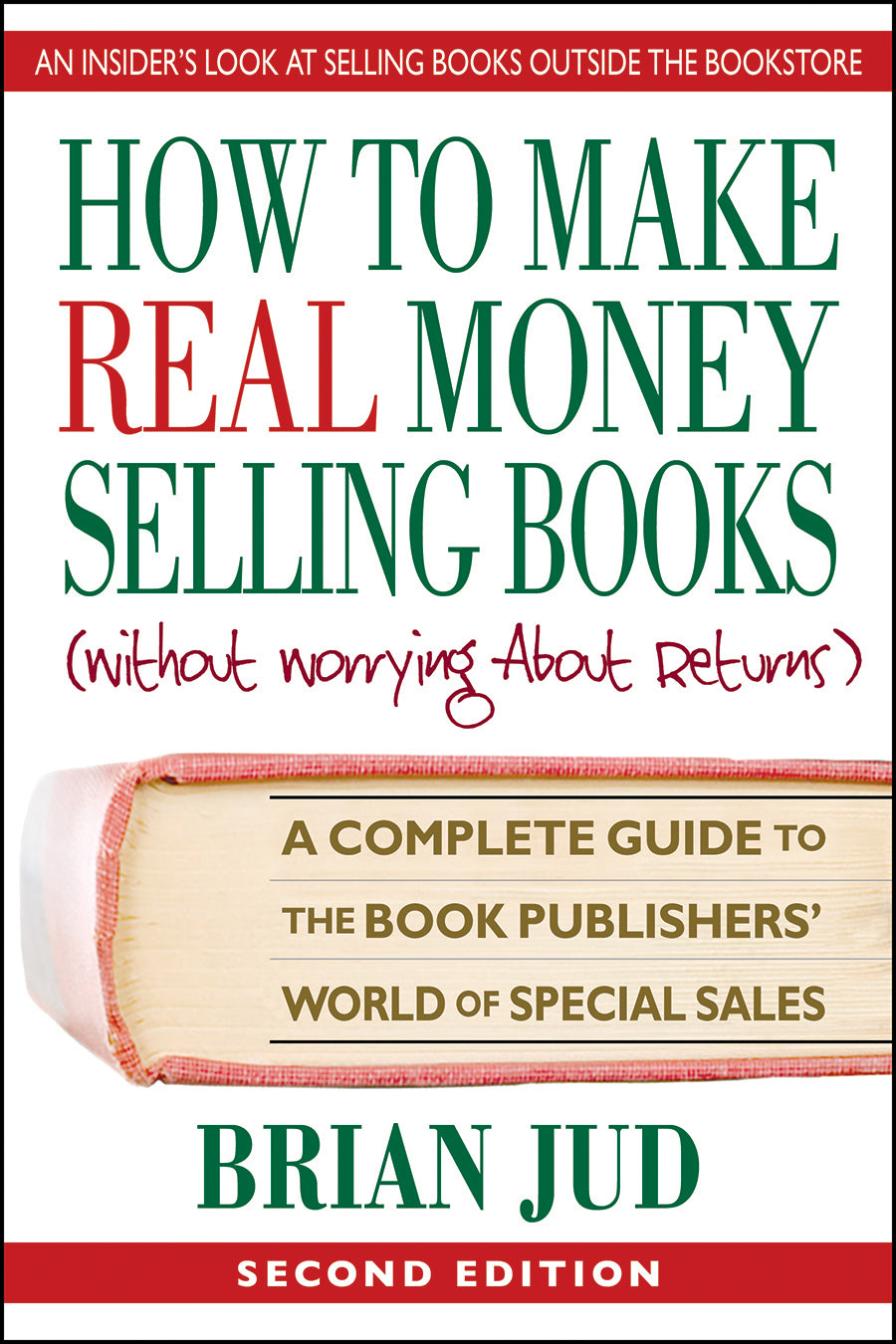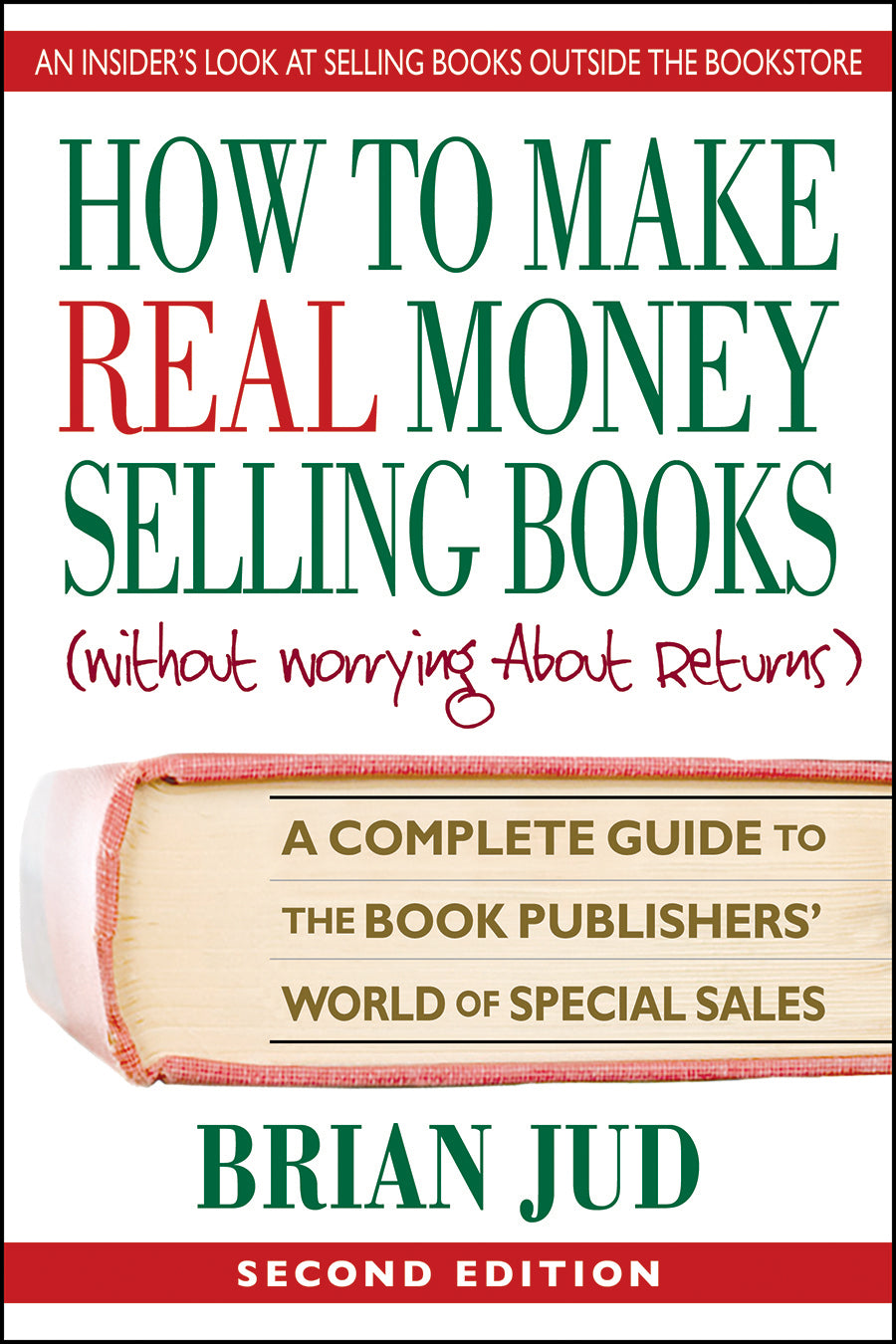The worldwide book market generates almost $90 billion annually, and more than half of those sales are made in non-bookstore outlets such as discount stores, airport shops, gift stores, supermarkets, and warehouse clubs. How to Make Real Money Selling Books provides a proven strategy for selling books to these enterprises. You will learn about developing a product strategy, conducting test marketing, contacting prospective buyers, promoting your product, selling to niche markets, and much, much more.
Brian Jud is president of Book Marketing Works, a consulting firm established to help independent publishers market their titles to non-bookstore outlets. He is host of the television series The Book Authority, and is a regular speaker on marketing topics at IBPA’s Publishing University.
Introduction
Chapter One. What is Non-Trade Marketing?
1. Trade versus Non-Trade Book Marketing
2. How Long Will Your Book Sell?
3. The Sectors of Non-Trade Marketing
4. Content is King
5. Dual Distribution
6. Ask the Right Questions
Chapter Two. Non-Trade Retail Markets
7. Discount Stores and Warehouse Clubs
8. Airport Stores
9. Supermarkets and Drug Stores
10. Home Shopping Networks
11. Display Marketing Companies
12. Museums Zoos Aquariums and Parks
13. Gift Shops
14. Specialty Stores
15. Book Clubs
16. Catalog Marketing
Chapter Three. Non-Trade Non-Retail Markets
17. Businesses
18. Associations
19. The Academic Market
20. Government Agencies
21. Military Marketplace
22. Libraries
Chapter Four. Do Your Homework before You Start Selling
23. Define Your Target Buyers
24. Segment the Mass Market
25. Understand Your Competition and Differentiate Your Title
26. Conduct Simple Market Research
27. Perform Basic Test Marketing
28. Find Potential Buyers
29. Classify and Prioritize Your List of Potential Buyers
30. Match Benefits to Buyers
Chapter Five. Start Selling
31. Utilizing Distribution Partners
32. Making the Initial Phone Call
33. Writing Your Proposals
34. Negotiating
Chapter Six. Promoting to Non-Trade Buyers
35. Seek Niche Reviews
36. Raise Awareness through Niche Media
37. Get Endorsements
38. Participate in Award Competitions
39. Implement Effective Mail-Order Campaigns
40. Sell Books through Speaking Engagements
41. Conduct Author Events
42. Attend Trade Shows
43. Use the Internet to Your Advantage
Chapter Seven. Putting It All Together
44. Create a Compromise between Buyers’ Wants and Needs and Your Own
45. Write a Business Plan
46. Set up a Publication Timeline
47. Prepare Yourself Mentally
48. Case Studies
Conclusion
Appendices
Resources
About the Author
Index
Book marketing is not what it used to be, nor what it could be. Publishers of all sizes are learning that limiting sales to bookstores—also called trade channels—may be the least effective and most costly way to sell books. This understanding has spawned a better way to market books—one that increases sales, revenue, and profits for those who take their products to people where they buy, rather than waiting for consumers to come to them. This technique is the essence of non-trade book marketing.
Whether you are thinking about writing a book, have already written a book but have not yet started selling it, or are already selling your book to bookstores, How To Make Real Money Selling Books will help you understand all of the different non-trade marketplaces that exist. You will also learn that selling to non-trade markets should not be a separate or new way of doing business. Rather, it should be an integral part of your overall sales strategy.
Non-trade marketing is put into practice in all three stages of the publishing process: writing, production, and marketing. First, you write information that consumers’ need and publish it in the form in which they want it. Then, you make it available where they shop (pet stores, gift shops, online, etc.), gather (seminars, libraries, etc.), or work (offices, schools, hospitals, etc.).
The purpose of this book is to get you to think about how to sell your book to non-trade markets, and then to help you actually get started doing it. It begins by answering the question—What is non-trade marketing? It then goes into in-depth discussions about all of the different non-trade marketplaces—retail and nonretail— including what buyers look for and how to contact them. That information is followed by sales preparation advice, promotional ideas, and strategies for putting everything together.
In short, this book provides information, strategies, examples, case studies, tips, and more that will make non-trade marketing accessible and profitable for you. You will read about new markets in which to sell your books, and also discover tried-and-true ways to reach them. To paraphrase Robert Kennedy, the most important thing to remember is to “Look where everyone else has been looking, but see what no one else has seen.” It sounds simple, and it is. But it is not easy. Persistence and determination are a must. The following list includes a few tips that will jump-start your non-trade sales journey:
_ Focus on content and form. Some publishers believe the key to increased income is to publish as many books as possible. However, instead of worrying about the quantity of books you produce, find out how the people in your target audience want the information you have delivered—do they want it in a book, booklet, three-ring binder, DVD, or something else? Then, manipulate your existing content into those desired forms. A book may be the best way to communicate your information, but at least be open to considering new product ideas. An open book and an open mind have a lot in common—they can both stimulate your thinking in unknown areas.
_ Work toward long-term results. The sales process for a large order to a non-trade outlet may take several years. Buyers may initially test your title, and then wait several months or even a year before placing an order. Rarely are people in as much of a hurry to buy your book as you are to sell it, so be patient. You may be thinking, “If I don’t make it through the short term, there won’t be a long term.”
However, consider these points before hitting the panic button:
_ There is more at stake for buyers purchasing in large quantities, and corporate buyers in particular want to buy from people they know. It takes time to build the relationships that lead to large orders.
_ As you prioritize your list of potential buyers, a process that is described in 29.
Qualify, Classify, and Prioritize Your List of Potential Buyers (page 225), plan to frequently sell small quantities to retailers while you work on the larger orders.
This will hopefully generate some interim cash flow, but the axiom still holds true that people buy on their timelines, not yours.
_ Eliminate the “Ready. Go. Get Set.” philosophy that can lead to failure. Instead, take the time to plan your marketing actions before you implement them; then evaluate their results and make any necessary changes in strategy or action. The
“Ready. Get Set. Go.” philosophy will get you more profitable, long-term results.
_ Media exposure is important to selling in non-trade markets, and it takes time to establish relationships and create awareness of your book in the media outlets that are relevant to your title.
_ Research and test marketing, described in 26. Conduct Simple Market Research (page 210) and 27. Perform Basic Test Marketing (page 215), can increase the likelihood of your success; however, both take time. In the end, though, your sales efforts will prove to be more profitable if you do both, rather than if you proceed without any pre-sales feedback.
_ In the trade market, books need to show sales results quickly or they are removed from the shelves. On the contrary, in non-trade markets the focus is on long-term profit optimization, rather than on short-term profit maximization. This makes for a better all-around business strategy.
_ It is not necessary to choose between marketing to trade and non-trade markets. It actually makes good sense to do both. If you are already distributing to bookstores and your books are listed on Amazon.com, do not abandon those outlets in search of other markets. Instead, maintain those sales outlets, but keep an open mind and look for new places to sell your books at the same time. If you are just beginning, educate yourself about trade and non-trade marketplaces, and combine both into your overall marketing strategy.
Beginning on the path of non-trade sales can be intimidating, but it will almost certainly increase your revenue and you will not have to worry about returns. This book will give you all of the tools you will need to educate yourself, build your confidence, and start selling to non-trade markets.





